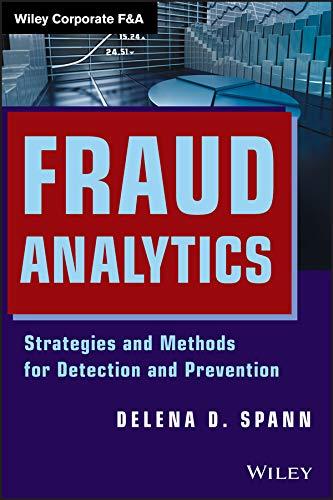Question
Chapter 25 #7 Net Present Value Methodand Present Value Index Diamond and Turf Inc. is considering an investment in one of two machines. The sewing
Chapter 25 #7
Net Present Value Methodand Present Value Index
Diamond and Turf Inc. is considering an investment in one of two machines. The sewing machine will increase productivity from sewing 170 baseballs per hour to sewing 306 per hour. The contribution margin per unit is $0.46 per baseball. Assume that any increased production of baseballs can be sold. The second machine is an automatic packing machine for the golf ball line. The packing machine will reduce packing labor cost. The labor cost saved is equivalent to $22 per hour. The sewing machine will cost $339,800, have a seven-year life, and will operate for 1,400 hours per year. The packing machine will cost $98,800, have a seven-year life, and will operate for 1,200 hours per year. Diamond and Turf seeks a minimum rate of return of 12% on its investments.
| Present Value of an Annuity of $1 at Compound Interest | |||||
| Year | 6% | 10% | 12% | 15% | 20% |
| 1 | 0.943 | 0.909 | 0.893 | 0.870 | 0.833 |
| 2 | 1.833 | 1.736 | 1.690 | 1.626 | 1.528 |
| 3 | 2.673 | 2.487 | 2.402 | 2.283 | 2.106 |
| 4 | 3.465 | 3.170 | 3.037 | 2.855 | 2.589 |
| 5 | 4.212 | 3.791 | 3.605 | 3.353 | 2.991 |
| 6 | 4.917 | 4.355 | 4.111 | 3.785 | 3.326 |
| 7 | 5.582 | 4.868 | 4.564 | 4.160 | 3.605 |
| 8 | 6.210 | 5.335 | 4.968 | 4.487 | 3.837 |
| 9 | 6.802 | 5.759 | 5.328 | 4.772 | 4.031 |
| 10 | 7.360 | 6.145 | 5.650 | 5.019 | 4.192 |
a. Determine the net present value for the two machines. Use the table of present values of an annuity of $1 above. Round to the nearest dollar.
| Sewing Machine | Packing Machine | |
| Present value of annual net cash flows | $ | $ |
| Amount to be invested | $ | $ |
| Net present value | $ | $ |
b. Determine the present value index for the two machines. If required, round your answers to two decimal places.
| Sewing Machine | Packing Machine | |
| Present value index |
c. If Diamond and Turf has sufficient funds for only one of the machines and qualitative factors are equal between the two machines, in which machine should it invest? (If both present value indexes are the same, either machine will grade as correct.) Packing Machine
#8
Average Rate of Return, Cash Payback Period, Net Present Value Method for a Service Company
Spanish Peaks Railroad Inc. is considering acquiring equipment at a cost of $295,000. The equipment has an estimated life of 10 years and no residual value. It is expected to provide yearly net cash flows of $59,000. The company's minimum desired rate of return for net present value analysis is 15%.
| Present Value of an Annuity of $1 at Compound Interest | |||||
| Year | 6% | 10% | 12% | 15% | 20% |
| 1 | 0.943 | 0.909 | 0.893 | 0.870 | 0.833 |
| 2 | 1.833 | 1.736 | 1.690 | 1.626 | 1.528 |
| 3 | 2.673 | 2.487 | 2.402 | 2.283 | 2.106 |
| 4 | 3.465 | 3.170 | 3.037 | 2.855 | 2.589 |
| 5 | 4.212 | 3.791 | 3.605 | 3.353 | 2.991 |
| 6 | 4.917 | 4.355 | 4.111 | 3.785 | 3.326 |
| 7 | 5.582 | 4.868 | 4.564 | 4.160 | 3.605 |
| 8 | 6.210 | 5.335 | 4.968 | 4.487 | 3.837 |
| 9 | 6.802 | 5.759 | 5.328 | 4.772 | 4.031 |
| 10 | 7.360 | 6.145 | 5.650 | 5.019 | 4.192 |
Compute the following:
a. The average rate of return, giving effect to straight-line depreciation on the investment. If required, round your answer to one decimal place. %
b. The cash payback period. 5 years
c. The net present value. Use the above table of the present value of an annuity of $1. Round to the nearest dollar. If required, use a minus sign to indicate negative net present value for current grading purpose.
| Present value of annual net cash flows | $ |
| Amount to be invested | $ |
| Net present value | $ |
Step by Step Solution
There are 3 Steps involved in it
Step: 1

Get Instant Access to Expert-Tailored Solutions
See step-by-step solutions with expert insights and AI powered tools for academic success
Step: 2

Step: 3

Ace Your Homework with AI
Get the answers you need in no time with our AI-driven, step-by-step assistance
Get Started


